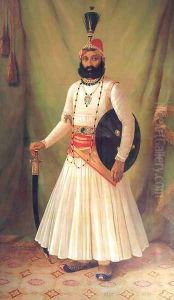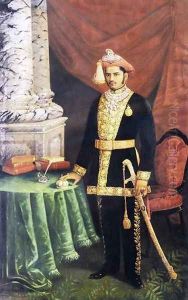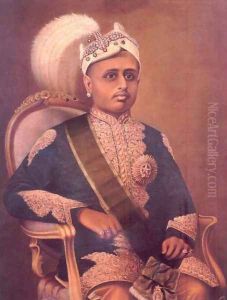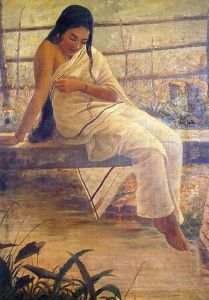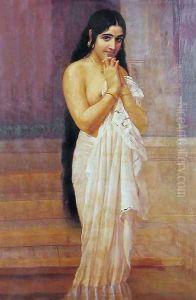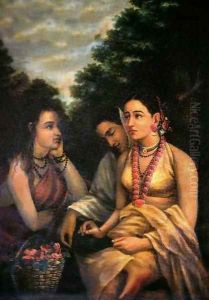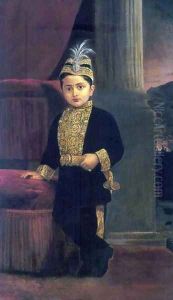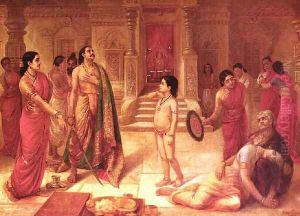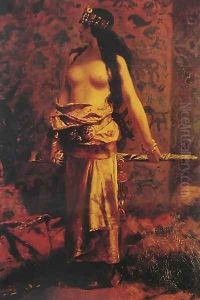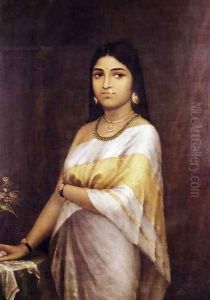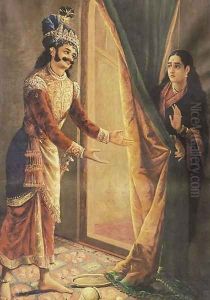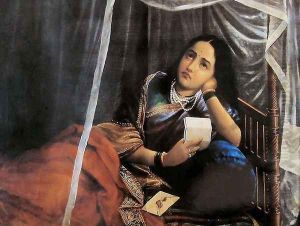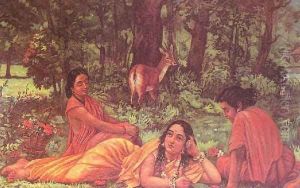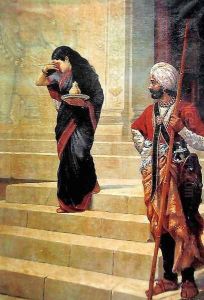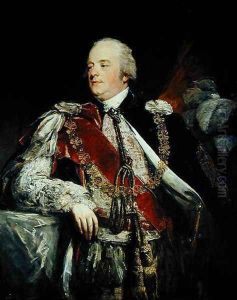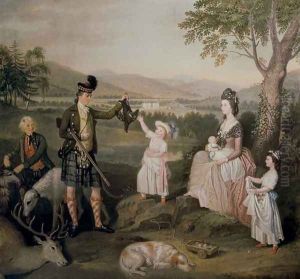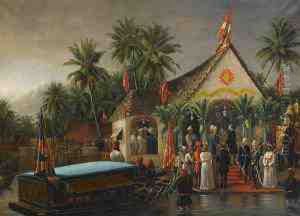





The Maharaja Of Travancore And His Younger Brother Welcoming Richard Temple-grenville, 3rd Duke Of Buckingham And Chandos, Governor-general Of Madras (1875-80), On His Official Visit To Trivandrum In 1880
-
About Reproduction
Discover the allure of art with our faithful reproduction of "The Maharaja Of Travancore And His Younger Brother Welcoming Richard Temple-grenville, 3rd Duke Of Buckingham And Chandos, Governor-general Of Madras (1875-80), On His Official Visit To Trivandrum In 1880", originally brought to life by the talented Raja Ravi Varma. Unlike posters or prints, our hand-painted oil painting breathes an unique sense of depth and texture into your space. Every detail, every stroke, and every texture is meticulously recreated, paying the perfect homage to Raja Ravi Varma and his artistic vision.
Owning this piece is more than just decoration - it's a statement of your refined taste in art. Let the vibrant colors and intricate details of this replica serve as a daily reminder of the beauty in our world. Elevate your decor and appreciate the richness of art with our replica of this masterpiece.
-
Painting Description
"The Maharaja of Travancore and His Younger Brother Welcoming Richard Temple-Grenville, 3rd Duke of Buckingham and Chandos, Governor-General of Madras (1875-80), on His Official Visit to Trivandrum in 1880" is a significant historical painting by the celebrated Indian artist Raja Ravi Varma. This work captures a momentous occasion in the history of the Indian subcontinent during the British colonial period, depicting the meeting between Indian royalty and a representative of the British Crown.
Raja Ravi Varma (1848–1906) was a pioneer in the development of Indian modern art and was known for his ability to merge European techniques with Indian aesthetics. His paintings are characterized by their use of realism, rich colors, and incorporation of Indian mythological themes as well as scenes from daily life and important historical events.
This particular painting is a testament to Raja Ravi Varma's mastery in portraiture and his skill in capturing the nuances of formal regalia and courtly ceremonies. It portrays the Maharaja of Travancore, Visakham Thirunal Rama Varma, along with his younger brother, welcoming the Duke of Buckingham and Chandos, who was the then Governor-General of Madras. The event took place in Trivandrum, the capital of the princely state of Travancore, in 1880.
The artwork is significant not only for its artistic value but also for its historical context, as it represents the complex relationships between the British colonial administration and the princely states of India. The painting is a visual record of the diplomacy and pageantry that were integral to the politics of the era.
Raja Ravi Varma's attention to detail is evident in the intricate rendering of the figures' attire and the grandeur of the setting. The composition of the painting, with its careful arrangement of figures and the interplay of gazes, conveys the formality and significance of the occasion.
As a historical document, the painting provides insight into the cultural and political milieu of late 19th-century India. It remains an important piece in the oeuvre of Raja Ravi Varma and continues to be studied for its artistic merit and its portrayal of a key moment in the colonial history of India.
-
Lead Time & Shipping
When you order this oil painting replica, it typically takes 2-3 weeks to paint. If the artwork is more complex, it might need a little more time to ensure the best quality. Once it's ready, we'll send you a photo for your approval. After you give the green light, we'll ship it to you for free.
-
Return & Refund
We believe in the quality of our hand-painted oil painting reproductions, and your satisfaction is our priority. If for any reason, you are not completely satisfied with your purchase, we offer a 45-day return policy. You can return your artwork within 45 days of receipt and receive a full refund. Please note that the artwork must be returned in the original packaging and in the same condition as it was received.





